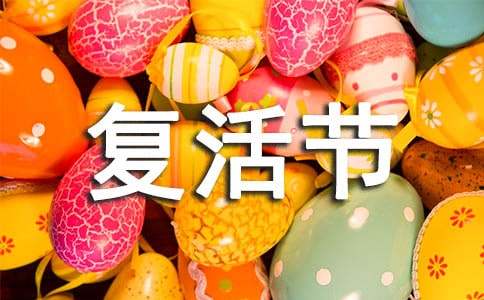复活节兔子的由来英语
复活节兔是复活节的'象征之一。以下是复活节兔子的由来英语,欢迎阅读。

There is a saying that "madness is like the march hare". It is said that in early spring, the hare became crazy. At that time, the male hare was fighting with each other in order to mate with the female. At the same time, the female to male rabbit rabbit yield usually before and will continue to refuse to male rabbit, makes matching behavior looks like a crazy dance, such scenes make early observers believe is the arrival of the spring rabbits were sent. Both rabbits and rabbits are rabbits. They breed quickly. The female can be pregnant with the second litter of rabbits when she is pregnant with the first litter (two foils will be born separately). This phenomenon is referred to as an ectopic pregnancy. The rabbit's sexual maturity is very early, and within a year there will be several small rabbits (hence, there is an old saying that "like a rabbit can live"); So the white rabbit and the hare became rich and productive representatives, and their behavior during the mating period was also introduced into folk myths and legends. Even so, the rabbit can lay eggs out where this concept is still no way to determine, may be only from the symbol of the conceptual confusion, but it is also possible as Easter itself, is a kind of old traditional lineage. In the language of the germans and the slavs, the word "Easter" comes from an ancient pagan goddess, the goddess of spring, "the goddess of the world". According to the legend, he saved a bird that had been frostbitten in the winter and turned it into a rabbit. Since it was once a bird, it retains the ability to lay eggs. It was the Easter bunny.
The bible does not have a creature with long ears and a soft tail of the Easter bunny. Nor is there a story about children painting eggs or looking for Easter baskets full of candy. And real rabbits don't lay eggs. So why are these traditions so ingrained in Easter Sunday? Why are they bound to be associated with the resurrection of Jesus? Actually, there's no connection. Bunnies, Easter eggs, Easter gifts, and fluffy yellow chicks in straw hats all come from Puritan. They are associated with the celebration of Easter, which is not associated with the Catholic celebration of the resurrection of Jesus.
According to the university of Florida's research shows that children's literature and culture center, celebrate Easter and the Easter bunny can be traced back to the 13th century in Germany, at that time, there is no Christian, people worshiped several gods and goddesses. Teuemann's Eostra was the goddess of spring and reproduction, and she was given a feast for her during the vernal equinox. Because of the rabbit's high reproduction rate, it became the symbol of the Eostra. Spring is also a symbol of life and rebirth; The egg is an ancient symbol of fertility. According to history.com, Easter eggs represent the resurrection of Jesus. In the 15th century, the Catholic church became the dominant religion in Germany, and the Puritan ideology was deeply rooted in it. Since then, Easter eggs have been associated with the resurrection of Jesus.
The first Easter bunny legends were recorded in the 16th century, according to a study by the university of Florida's children's center. By 1608, the first story about a rabbit laying eggs and hiding in a garden was published. These legends were brought to the United States in the 18th century when German immigrants settled in the Dutch cities of Pennsylvania. The habit of laying eggs for rabbits has followed. Eventually, the nests became decorated baskets and colored eggs were swapped for candy, snacks and other small gifts.
Although the custom of Easter egg is also originated from ancient times, its provenance is still unverified. The greeks usually painted their eggs red on this day, using the color of blood to signify the resurrection of everything in the spring (later, it also showed the blood of Christ). Some people also use green daub to commemorate the new green that comes out after a winter withered. Other colors, including the muted pastel (or perhaps the rainbow) that is popular in the United States and elsewhere, also appear.
German protestants wanted to preserve the Catholic tradition of eating Easter eggs, but did not want their children to accept the Catholic taboo. Catholics are not allowed to eat eggs in lent in April, so there will be plenty of eggs at Easter.
The concept of the egg bunny was introduced to the United States in the 18th century. In the Dutch region of Pennsylvania, German settlers tell their children stories about "Osterhase". The Hase is the hare, not the rabbit. So in the western Nordic folklore, it's the hare, not the rabbit.
Usually only good children can receive the Easter egg as a gift in their own nest.
【复活节兔子的由来英语】相关文章:
复活节的兔子由来英语04-06
英语复活节的由来04-01
复活节的由来英语03-26
复活节的由来用英语写04-02
复活节的由来简单02-23
复活节详细的由来04-05
浅谈复活节的由来04-04
复活节兔子的来历06-08
复活节由来介绍02-24
